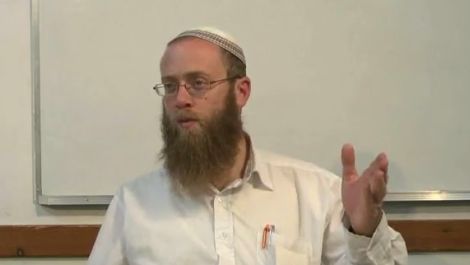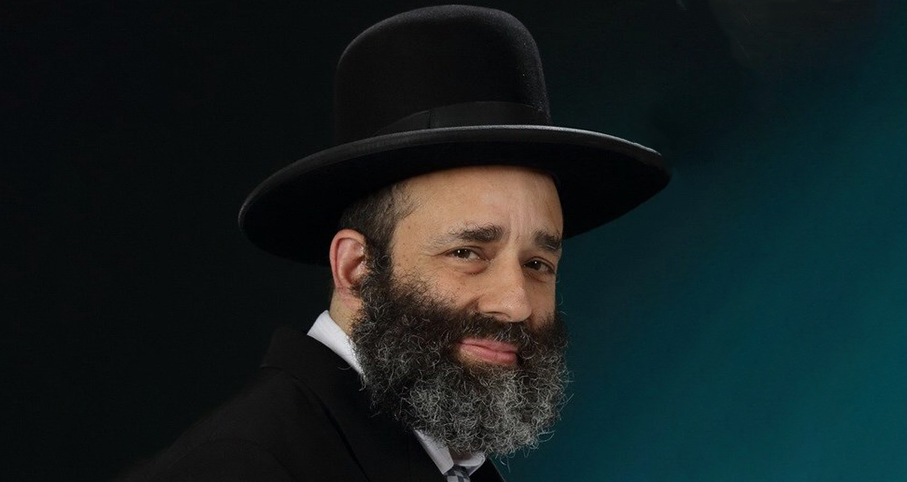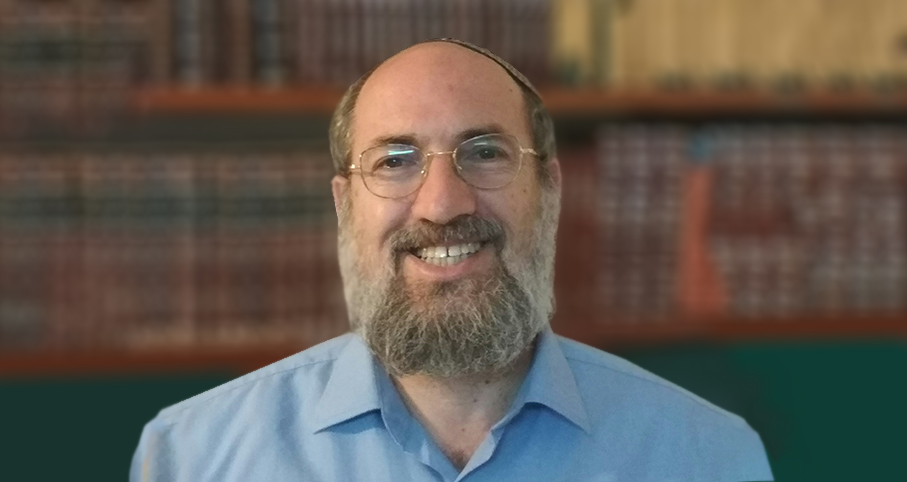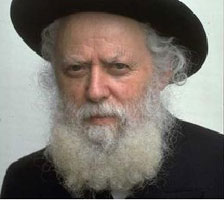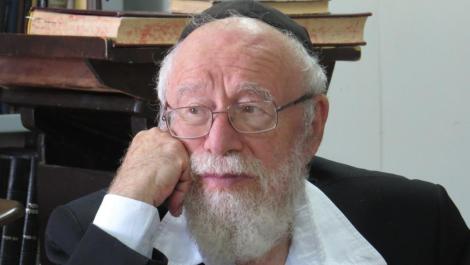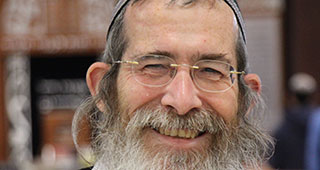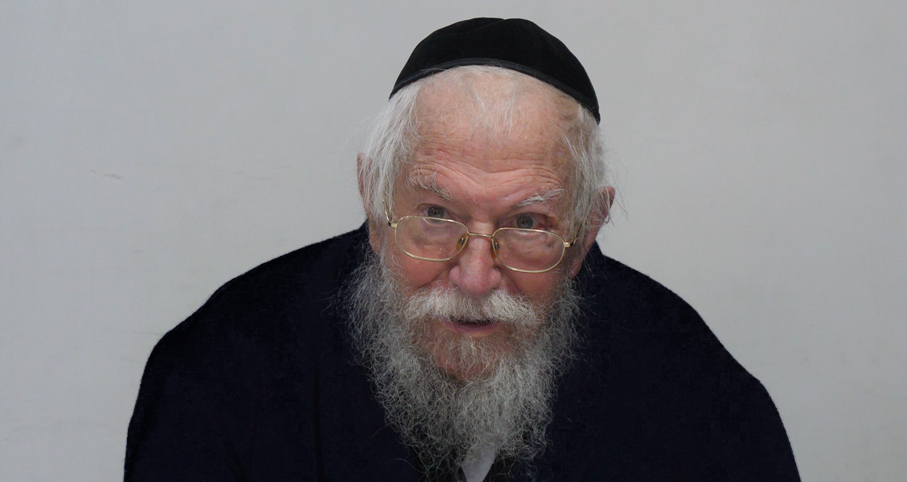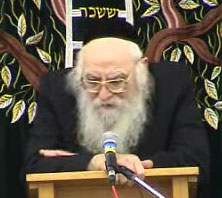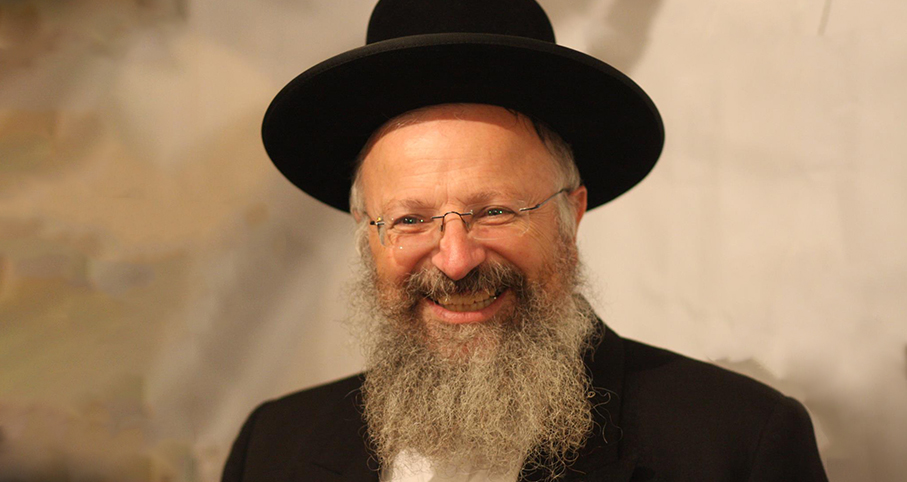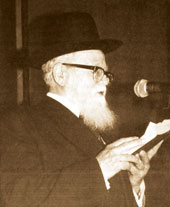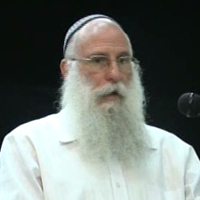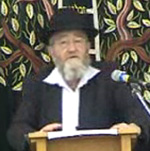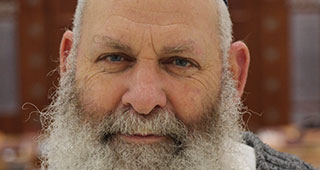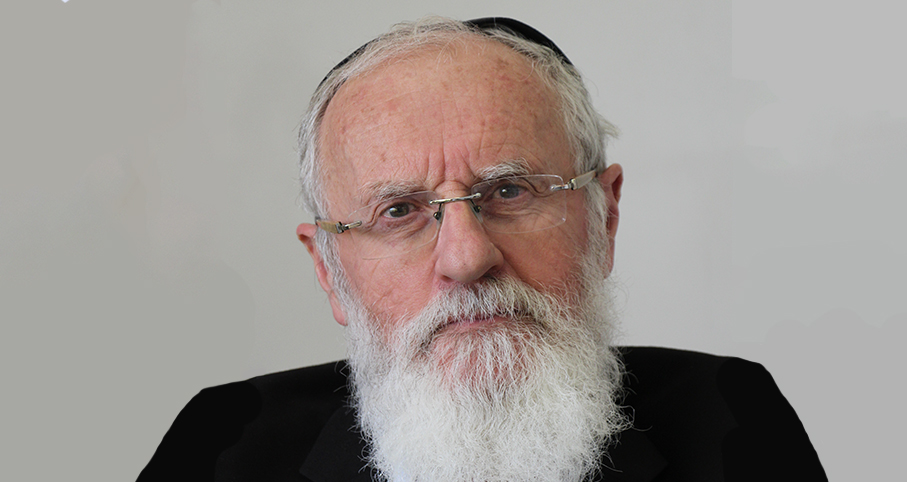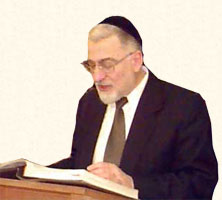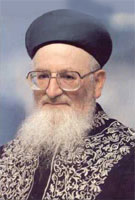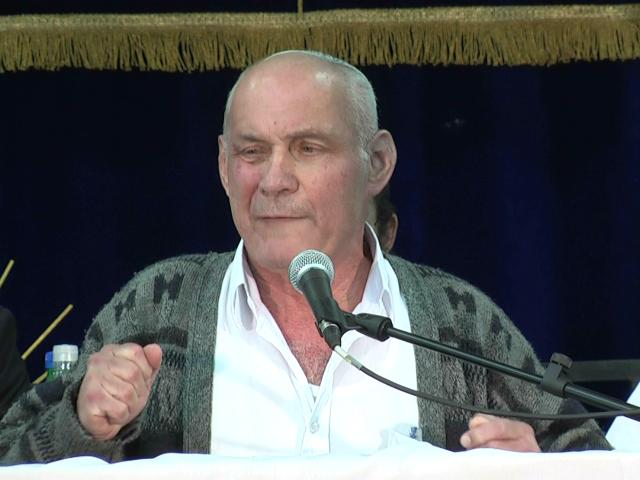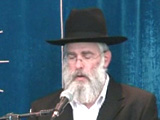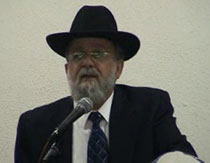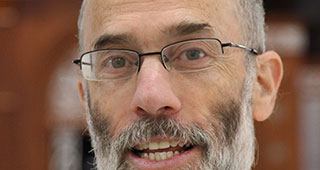Beit Midrash
- Shabbat and Holidays
- The High Holidays
- Rosh Hashana
Question #1: Second Day?!
“Is it universally accepted that everyone in Eretz Yisroel is required to observe two days of Rosh Hashanah?”
Question #2: Second Day Haftarah
“Why do we read the specific haftarah that we do on the second day of Rosh Hashanah?”
Question #3: Second Day of Judgment!?
“How can our tefillos refer to the second day of Rosh Hashanah as the ‘Day of Judgment,’ when we were already judged on the first day?”
Introduction:
The Torah describes Rosh Hashanah as a one-day holiday that falls on the first day of the seventh month, the date that is Rosh Chodesh Tishrei. Yet, as we all know, we observe two days of Rosh Hashanah.
Each of the opening three questions notes something anomalous concerning this concept of two days of Rosh Hashanah, although, as we will see, the answers to these questions are not closely related to one another. Before discussing the opening questions, I need to provide some introduction. Let us enter a time machine and bring ourselves back to the era when there was a functioning Sanhedrin.
Among the numerous and multifaceted responsibilities of the Sanhedrin, also called by its proper Hebrew name, the Beis Din Hagadol, was overseeing the Jewish calendar. In that era, the determination of whether Rosh Chodesh would be on the thirtieth or on the thirty-first day (counting from the previous Rosh Chodesh) was uncertain, until the head of the Sanhedrin, called the nasi, declared it such. The Beis Din did not declare the thirtieth day as Rosh Chodesh until two witnesses testified that they had seen the new moon. Only after the witnesses were cross-examined by the Beis Din, and their testimony was analyzed carefully, did the Beis Din declare the thirtieth day to be Rosh Chodesh.
(By the way, the Beis Din was quite certain as to when the new moon occurred, where it could be located in the sky and whether the testimony of the witnesses was accurate. Notwithstanding that the Beis Din had all this information, the Torah requires eyewitness testimony of a sighting of the new moon. The witnesses and the Beis Din are fulfilling a mitzvah min haTorah by using this system to “determine” the new moon, notwithstanding that no new technical information is gleaned from the witnesses’ testimony.)
During this era, anyone not within walking distance of the Sanhedrin would be uncertain whether Elul was 29 or 30 days long, and, therefore, would also be uncertain whether Rosh Hashanah is the 30th or the 31st day after Rosh Chodesh Elul. Because of this uncertainty, everyone observed two days of Rosh Hashanah. The only possible exception was the town in which the Beis Din Hagadol met, where they would be certain during Rosh Hashanah which day had been chosen.
Sometimes, even the town in which the Beis Din Hagadol met was required to observe two days Rosh Hashanah, not because of an uncertainty, but because of a takanas chachamim. The Mishnah (Rosh Hashanah 30b) explains that once, when the Beis Hamikdash still stood, the witnesses attesting to the new moon appeared in Beis Din late in the afternoon of Rosh Hashanah. By the time the Beis Din had declared that day to be Rosh Chodesh and Rosh Hashanah, the afternoon korban tamid had already been offered. Since this korban had been offered before any declaration that the day was Rosh Chodesh, the Levi’im accompanied the korban by singing the shirah of the weekday korban. Result: the shirah specific for Rosh Hashanah was not sung that day as accompaniment to the daily korban.
To make sure that this situation did not recur, Chazal instituted that, should witnesses arrive after the afternoon korban was offered, Beis Din would not accept them, thus automatically postponing Rosh Hashanah to the next day, so that the correct shirah would
be sung on that day. Although once Beis Din knew that they would not accept witnesses, the first day was no longer Rosh Hashanah, Chazal required that it be kept as such (as a takanah) so that, in the future, people would not be lax in observing the assumed day of Rosh Hashanah.
What is significant about this takanah is that now there could be instances when Chazal declared two days of Rosh Hashanah. Until this time, observing two days of Rosh Hashanah had always been only a result of uncertainty, because of lack of local knowledge about the decision of the Beis Din. Henceforth, observing two days of Rosh Hashanah was sometimes a takanas chachamim.
We realize that all of these reasons made it impossible for local schools to send out annual Jewish calendars as fundraisers. But the schools in this era had a different and much more efficient method to raise necessary funds. This is a topic we will discuss at some time in the future.
Changes because of permanent calendar
Thus far, we have explained the historical background to the observance of two days of Rosh Hashanah. However, today we do not wait for the Sanhedrin to determine which day is Rosh Chodesh. Hillel Hanasi (not to be confused with his better-known and much earlier ancestor, Hillel Hazakein), realizing that the Roman persecutions of his time (the third century C. E.), would soon make it impossible for Sanhedrin to function in Eretz Yisroel, created a pre-determined calendar. His incredibly accurate and vastly simplified calendar allowed someone equipped with paper, pencil and a reasonable faculty for numbers to calculate the calendar, until the Sanhedrin again exists. In other words, Hillel set the Jewish calendar on autopilot.
(This is not halachically preferable. Ideally, the decisions germane to the calendar should be based upon witnesses and the monthly input of the Sanhedrin. However, Hillel Hanasi’s system is permitted when using the Sanhedrin is not an option.)
With the implementation of the new calendar not dependent on month-by-month decisions of Beis Din, the following observation was raised: At this point in history, people in chutz la’aretz can calculate definitively which day is Yom Tov. If so, there should be no reason to observe two days of any Yom Tov anymore (Beitzah 4b).
The Gemara explains that a special takanah was instituted at this time in history. The Beis Din in Eretz Yisroel sent a message to those in chutz la’aretz to continue observing a second day of Yom Tov, which is usually called yom tov sheini shel galiyos, following their prior custom, notwithstanding that the reason for the observance no longer applies. Rashi explains that the reason for the new takanah is that persecutions might cause Jews to forget the information necessary to figure out the calendar. The likelihood of a Jew eating chometz on Pesach unwittingly, or violating other serious prohibitions, is reduced when keeping two days of Yom Tov. In other words, although keeping an extra day of Yom Tov was originally for a completely different concern, once the custom had been established, Chazal required the continuation of the observance, for a basically unrelated reason.
Two days of Rosh Hashanah
Now that we have plowed through this extensive introduction, we have yet to analyze why the holiday of Rosh Hashanah has two days even in Eretz Yisroel. When the determination of Rosh Chodesh was in the hands of the Sanhedrin, we understand the need to observe two days of Rosh Hashanah – people were uncertain which day had been established as Rosh Hashanah, and therefore they were required to observe both. However, now that our calendar can be calculated in advance, why should those who live in Eretz Yisroel be observing two days of Rosh Hashanah?
Indeed, the rishonim dispute whether there is a requirement to keep two days of Rosh Hashanah in Eretz Yisroel, once the calendar is on autopilot as a result of Hillel Hanasi’s new takanah.
The Rif rules that, in Eretz Yisroel, two days of Rosh Hashanah should be observed. The Baal Hama’or not only questions why this should be true, but contends that, prior to the Rif’s ruling, the practice in Eretz Yisroel had been to observe only one day of Rosh Hashanah. This was changed, he claims, when disciples of the Rif arrived in Eretz Yisroel in the twelfth century and began promulgating his opinions. They changed the minhag of observing only one day of Rosh Hashanah in Eretz Yisroel, which the Baal Hama’or contends is the correct practice.
Upon what is this dispute dependent? It appears that the Baal Hama’or was of the opinion that while the communities in chutz la’aretz requested -- and were denied -- permission to drop their observance of the second day of Yom Tov, this discussion did not affect those in Eretz Yisroel, even on the one Yom Tov when they observed two days, Rosh Hashanah.
However, there are allusions in the Gemara that Rosh Hashanah is now a two-day observance. The Rif, and those who followed his approach, concluded that, since at one point there had been a takanah to observe two days of Rosh Hashanah, this takanah remained in place.
Why is Yom Kippur different?
If those who live in chutz la’aretz are required to observe two days of Sukkos because of the uncertainty which day is the proper Yom Tov, should not Yom Kippur, also, be kept for two consecutive days?
The reason why Yom Kippur is treated differently is simple: for most people, fasting two consecutive days constitutes pikuach nefesh, a life-threatening situation. Just as we override Shabbos to provide medical care for someone who might be in a life-threatening situation, and we permit a person for whom fasting for even one day is life-threatening to eat on Yom Kippur, so do we consider two days of Yom Kippur observance as life-threatening for most people. Therefore, no community ever observed two consecutive days of Yom Kippur.
There is another reason to be lenient. Elul was virtually always a 29-day month. It could happen in any given year that Elul would have thirty days, and therefore Rosh Hashanah and Sukkos were observed as two days of Yom Tov. However, because of the obvious difficulty of fasting two consecutive days, the practice regarding Yom Kippur was to assume that Elul was 29 days, and that the day we call the tenth of Tishrei is the correct Yom Kippur.
Second Day Haftarah
At this point, let us examine the second of our opening questions: “Why do we read the specific haftarah that we do on the second day of Rosh Hashanah?”
The haftarah read on the second day of Rosh Hashanah is in the book of Yirmiyahu and begins with the words: Koh amar Hashem. There is no obvious allusion to Rosh Hashanah in this haftarah, yet there appears to have been a takanah of Chazal to read this haftarah on this day.
Before proceeding to discuss this question, we need to explain the history of why we read the haftarah, altogether. The early halachic authorities report two reasons for the establishment of the reading of the haftarah. According to one approach, during the period of the second Beis Hamikdash, at the times of the persecutions prior to the Chanukah story, the Seleucid Greek emperor Antiochos Epiphanes was bent on destroying Judaism. Strongly assisted by assimilated Jewish elements, called the misyavnim, literally, “those who made themselves into Greeks,” or Hellenized Jews, Antiochos banned virtually all shemiras hamitzvos, until the remnant of Torah-true Jews rebelled. Eventually, they drove his empire out of the Holy Land, which had not even been their objective.
During the persecutions that were the run-up to their rebellion, Antiochos had banned the reading of the Torah, kerias haTorah. As a response to his persecutions, Chazal implemented several takanos to retain Jewish practices. One of these takanos was the introduction of the reading of the haftarah, which were selections of Nevi’im. On Shabbos, Yom Tov and fast days, the haftarah was read in shul at the point in the prayers when the Torah should have been read (Avudraham; Levush; Tosafos Yom Tov, Megillah 3:4).
A very different reason for reading haftarah on Shabbos and Yom Tov is that an early practice was for Jews to gather daily after they completed the morning davening and study together Torah, prophets, and other Torah subjects for a considerable amount of time, before they went to work. As generations passed, it became increasingly difficult to devote this amount of time to studying Torah, and the custom was abandoned on weekdays, but still maintained on Shabbos and Yom Tov, when people did not go to work (Teshuvos Hage’onim #55; Sefer Hapardes, page 306; Shibolei Haleket #44).
According to either approach, at the time that the takanah of haftarah was initiated, the individual who was called upon to read the haftarah could choose any reading he preferred. It was recommended to read something that was associated with the Torah reading of the day, either the one that had been missed (according to the first approach) or that actually was read (according to the second).
On certain dates of the year, Chazal instituted that specific haftarah portions be read (Mishnah, Megillah 30b; Maseches Sofrim 17; Gemara Megillah 31a). Among these instructions, the Gemara (Megillah 31a) mentions that on the second day of Rosh Hashanah the haftarah should be Habein yakir li Efrayim, from the 31st chapter of the book of Yirmiyahu. Rashi notes that this posuk quotes the expressions zochor ezkerenu, “I will certainly remember,” and racheim arachamenu, “I will certainly have mercy,” both concepts that are very appropriate to Rosh Hashanah.
Peculiarity about this haftarah
To the best of my knowledge, all of Klal Yisroel includes the posuk Habein yakir li Efrayim in the haftarah of the second day of Rosh Hashanah, as mentioned in the Gemara; however, there are different ways to read this haftarah. Ashkenazic and most other practices begin the haftarah with the words, Koh amar Hashem motzo chein bamidbar, and close it with the posuk, Habein yakir li Efrayim. Virtually all customs -- Ashkenazi, Sefardi, Edot Hamizrah, Italian, and Yemenite -- follow this basic approach, although some communities begin the haftarah one posuk earlier.
However, all of these customs appear to be strange. Whenever the Mishnah or Gemara identifies a reading by its words, these are the first words that we recite as part of that reading. (On occasion, it is the second posuk, and the Mishnah or Gemara uses the word beginning the second posuk because the first posuk may be Vayedabeir Hashem el Moshe Leimor or a similar wording that does not identify clearly what we are to read.) However, in the instance of this haftarah, virtually all customs end with the reading of Habein yakir li Efrayim, as the last posuk.
The only custom I discovered that seems to follow the Gemara literally and, it would seem, more accurately, is the ancient Greek custom, called Minhag Romaniot (so called because it was the practice of the Jewish communities who lived under the rule of the Eastern Roman Empire, which later came to be known as the Byzantine Empire). Unfortunately, the practices of Minhag Romaniot are virtually extinct. To the best of my knowledge, there are only three congregations anywhere in the world that still follow Romaniot practice, one in Crete, a second in Turkey, and a third in New York, and none has significant observant membership that follows Minhag Romaniot.
We are forced to explain that our common custom assumes that the Gemara is requiring simply to include the posuk of Habein yakir li Efrayim as part of the haftarah for the second day of Rosh Hashanah, and the accepted custom includes several other beautiful themes mentioned by the prophet Yirmiyahu that are appropriate to Rosh Hashanah, including the unique relationship of Hashem and the Jewish people, the promise that Hashem will return us, and the moving account of Rachel’s successful beseeching Hashem on behalf of her children. The last of these themes has a special relationship with Rosh Hashanah because of the statement of the Gemara that Rachel was one of the women remembered by Hashem on Rosh Hashanah, the other two being Sarah and Chana, who are the subjects of the first day’s Torah reading and haftarah, respectively.
Second Day of Judgment!?
At this point, let us address the last of our opening questions: “How can the second day of Rosh Hashanah be called the 'Day of Judgment,' when we were judged already on the first day?”
As we can well imagine, we are not the first to ask this question. Allow me to provide an introduction from Tanach that will help to explain the approach presented by the Zohar:
After Shlomoh Hamech’s lengthy prayer dedicating the Beis Hamikdash, he blessed the people by reciting the following: May these words of mine with which I beseech Hashem be close to Hashem day and night, to accomplish the justice of His servant and the justice of His people, each and every day (Melachim I 8:59).
The posuk implies that there are two different types of justice, one of Hashem’s servant, the king, and the other applied to the people, as a whole. The proof that there are two types of judgment is that the word justice is repeated in the posuk. The Zohar (Parshas Pinchas) refers to these types of justice as the “upper judgment” and the “lower judgment,” and that these are performed by two different heavenly courts. The upper judgment, which is the harsher one, is performed on the first day of Rosh Hashanah and the “lower judgment,” which is softer, is performed on the second day. The Zohar states that these two judgments are “correlated” or “combined,” and are both “existent,” whatever these terms mean in Kabbalistic terminology.
Rav Dessler intimates that the difference between these two types of judgment is the extent to which a person makes serving Hashem the central focus in his life. Someone who has diverted the focus of his daily life from serving Hashem must rely on his relationship with those greater than he is. This is the “lower judgment” that this person undergoes on the second day, with a greater chance of success.
Conclusion
The Torah refers to the Yomim Tovim as mo’ed. Just as the term ohel mo’ed refers to the tent in the desert which served as a meeting place between Hashem and the Jewish people, so, too, a mo’ed is a meeting time between Hashem and the Jewish people (Hirsch, Vayikra 23:3 and Horeb).
We understand well why our calendar involves use of the solar year – after all, our seasons, and the appropriate times for our holidays, are based on the sun. But why did the Torah insist that our months follow the moon and that our holidays depend, also, on the moon’s phases and rotation? It seems that we could live fine without months that are dependent on the moon’s rotation around the earth!
An answer to this question is that the waxing and waning of the moon is symbolic of our own relationship with Hashem – which also sometimes waxes and sometimes wanes. Yet, we know that just as the moon, after its waning and almost disappearing, always renews itself, so, too, we have the capacity to grow and improve, in accordance with how much we allow Hashem into our world and into our actions.
This Shiur is published also at Rabbi Kaganof's site

Questions about Simanim on Rosh Hashana
Rabbi Daniel Mann | Elul 22 5776

Shofar Blowing during the Silent Amida
Rabbi Daniel Mann | 25 Elul 5783
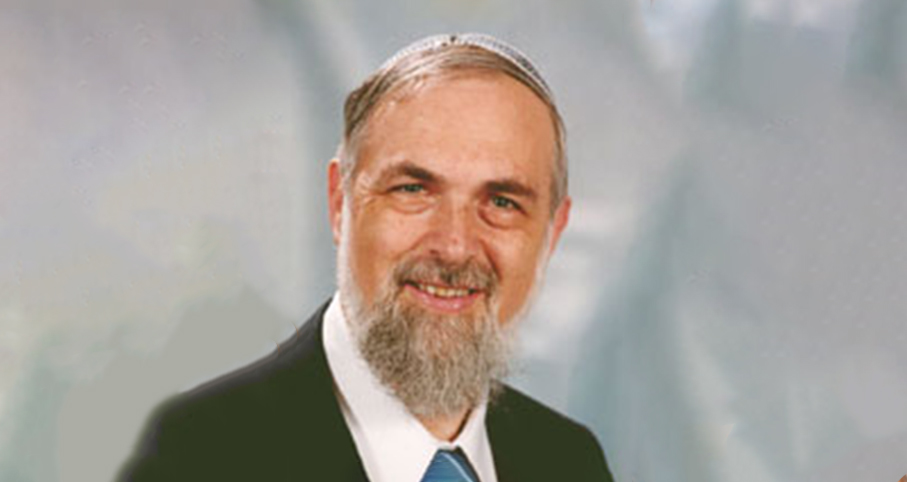
Another Look at Malchuyot, Zichronot, and Shofarot
Rabbi Yossef Carmel | Rosh Hashana 5765
